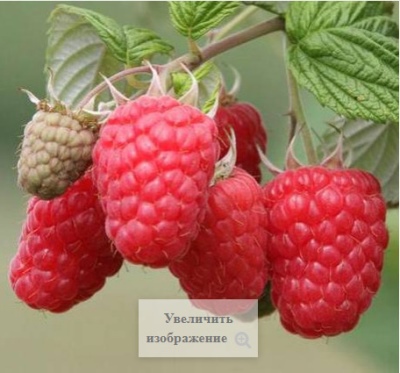
- Authors: Scotland
- Repairability: No
- Berry color: light red
- Taste: pleasant, balanced, sweet with sourness
- Ripening period: late
- Berry weight, g: 6-10
- Yield: 5 kg per bush
- Frost resistance: winter hardy
- Fruiting period: July
- Yield rate: high
Among the raspberry varieties of foreign selection, a large share of developments belongs to the UK. The achievements of the East Mulling Experiment Station in England are widely known, and Scottish breeders became famous for the Glen Series. One of the successful new products was the Glen Dee variety.
Breeding history of the variety
The presentation of the variety took place at the annual Fruit for the Future exhibition in the Scottish city of Dundee in 2014. The Glen Dee raspberry was bred by the James Hutton Institute, Scotland's largest agricultural and land use research organization. Rubus idaeus Glen Dee (0447с5) continues the famous Glen varietal line. This series is grown all over the world, very popular in Europe, and in Scotland it has 90% of the raspberry market. For nearly three years, Glen Dee has been undergoing trials and has shown excellent yields compared to the already established commercial varieties Glen Ample and Glen Fyne.
Description of the variety
Late-ripening, high-yielding, frost-resistant, Glen Dee forms a compact, tall shrub with powerful thornless stems and very large sweet berries. The plant is resistant to pests and major diseases. The crop is well transported and stored for a long time, keeping an excellent presentation.
Ripening terms
Late ripening of this variety allows you to get a harvest during the period when the main summer varieties have finished fruiting, and the remontant ones are still in the flowering stage. Dates: July - early August. Producers compared Glen Dee to the well-known Octavia variety: in the northern regions of Britain, it bears fruit 5 days later than Octavia, and in the southern regions a little earlier.
Growing regions
Recommended by the grower for commercial use, Glen Dee has become a favorite in the UK market and is poised to conquer international markets. There is already information about the successful cultivation and acclimatization of this raspberry in Ukraine. There are still not enough reviews from Russian gardeners, the variety is still poorly studied and not widely spread.
Yield
Glen Dee is a consistently productive variety with a 7% higher yield than Glen Dee. The absence of thorns is a positive factor in harvesting. The exceptional size, the large number of berries on the flower stalk and their excellent quality make it possible to harvest about 5 kg per bush on industrial plantations.
Berries and their taste
Glen Dee fruits have a pronounced pleasant aroma and a sweet balanced taste, characterized by a very slight sourness, without astringency. Brix sucrose score: 11 out of 12. In cold summers, the acidity in berries can be more noticeable.
In shape, the fruits are elongated, conical, with a blunt end. Ripe berries are light red, uniformly large, weighing 6-10 g, with well-linked drupes. The variety is distinguished by excellent transportability and keeping quality, since the Glen Dee fruits are dry and dense. Raspberries are great for fresh use, making baked goods, desserts, preserves and jams, freezing for the winter.

Growing features
A vigorous plant with a height of 1.8-2.2 m has hard, smooth stems, which are recommended to be tied to trellises. Pruning is done in the spring, removing unripe and diseased branches. In the fall, the raspberry tree is thinned out, removing two-year-old shoots that have bore fruit and excess root shoots.
It is important to ensure that no stagnant water forms from rain or watering, which can lead to root rot.
Site selection and soil preparation
For planting, choose a flat or slightly sloping, sunny, well-drained area. Raspberry precursors should not be strawberries, potatoes, and tomatoes.
Glen Dee grows well in loamy soil or sandy loam, saturated with humus and nutrients.





Frost resistance and preparation for winter
The variety turned out to be quite frost-resistant. Usually, preparing for winter, the stems are bent down and covered with covering material or spruce branches. Such a shelter is especially necessary in an open area so that the frosty wind does not dry out the plant. If the place is calm, then the raspberry of the Glen line will winter perfectly even without bending the bush. There are reviews from breeders from the Omsk region: Scottish raspberries survived a snowy winter with frosts down to -40 ° C without any problems.

Diseases and pests
Unfortunately, Glen Dee can be affected by late blight (root rot). This variety has shown high resistance to other diseases and pests. A special gene A10 protects the plant from raspberry aphid attacks.

Unfortunately, raspberries, like other plants, do not bypass various diseases and pests. Only armed with the knowledge and the necessary means for this, you can cope with such troubles. To help the plant, it is very important to be able to recognize the disease in time and begin timely treatment.
Reproduction
The most effective way of propagation of the variety is by root suckers. The mother plant gives rise to numerous root shoots.Lignified shoots are dug up in the fall, the strongest are selected, the leaves are removed and planted in organic-fed soil.
Green shoots with a height of about 5 cm ("nettles") for reproduction are taken with a rosette of 3-4 leaves. Dig up seedlings that are at a distance of at least 35 cm from the bush. With a lump of earth, the sockets are separated and planted in a greenhouse or in fertile soil for growing.








































































